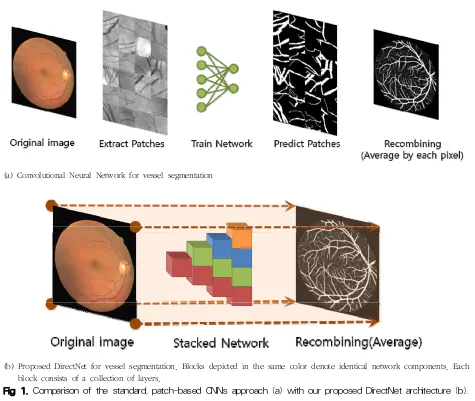
Abstract
Purpose : The aim of this study is to develop a novel deep learning system for vessel segmentation of retinal images. We present a recurrent Convolutional Neural Network (CNN) architecture and compare performance with existing CNN approaches, showing greatly reduced processing time with excellent performance. Methods : The proposed DirectNet architecture is composed of blocks, with each block containing a collection of convolutional layers. Blocks are stacked up in a pyramid, such that the number of blocks is increased by one at each level. Data are repeatedly processed by each block and combined with outputs of other blocks. This recurrent structure combined with the use of large kernel avoids the need for up-or downsampling layers, thus creating a direct pixel-to-pixel mapping from pixel inputs to the outputs of segmentation. Results : DirectNet provides higher accuracy, sensitivity, specificity, and precision values compared to a state-of-the-art, patch-based CNN approach (0.9538 vs 0.9327, 0.7851 vs 0.7346, 0.9782 vs 0.9730, 0.8458 vs 0.7987). Training time on a standard dataset for DirectNet is reduced from 8 hours to 1 hour, and testing time per image is greatly reduced from 1 hour for the patch-based method to 6 seconds for our method. Conclusion : The proposed deep-learning architecture is eight times faster for training and 600 times faster for testing at slightly higher accuracy values than a state-of-the-art method. Segmentation successfully highlights retinal blood vessels of large down to small sizes.